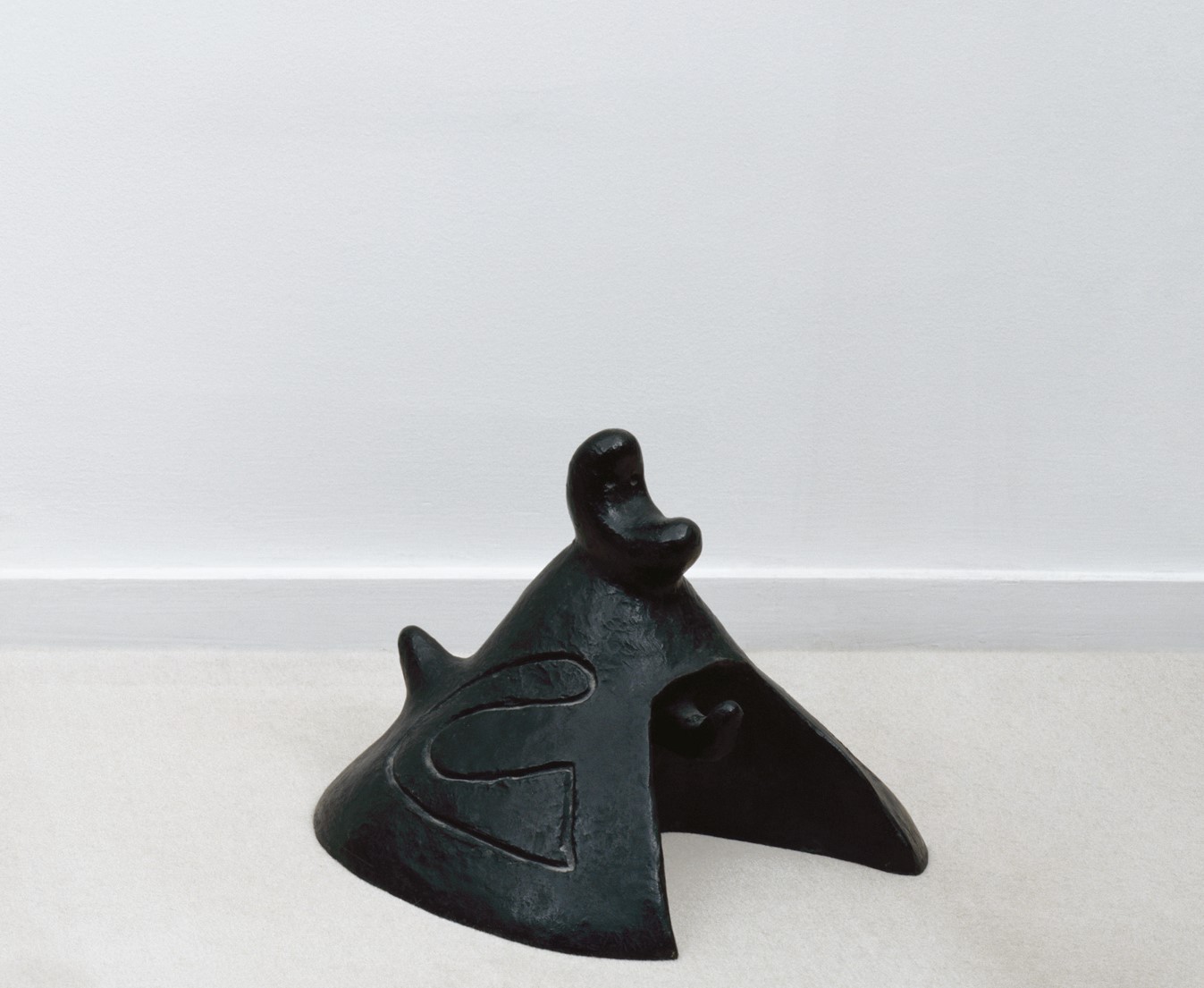


Dona, 1949
Bronze
21 x 25 x 22 cm
Objects are very important to Joan Miró. Not only does he collect them, but they also serve to decorate his studios and echo his creative process. Some come from nature, which the artist discovers on his walks in Mont-roig or Palma. Others come from the world of craftsmanship, ancestry or popular culture, such as nativity scene figurines and Mallorcan terracotta whistles. It is precisely these objects that inspire him to create Personaje, including protuberances and incisions that define its features and determine its sex.
Modelling clay or mud and feeling the materials allows him to develop a material and three-dimensional awareness. This habit dates back to his academic days at the Escola d’Art, where Francesc Galí stimulated the creative abilities of his students by asking them to draw the shapes of objects they had felt with their eyes closed, using only their sense of touch.
In the late 1920s, influenced by Surrealism, he began to create sculptures by assembling disparate objects, which he freed from their function to give rise to new beings. Later, through bronze casting, Miró managed to reach a wider audience with multiple copies of each of his sculptures. This also led him to work with different foundrymen, each of whom contributed their own particularities. While with the foundryman Gimeno, with whom he began working in bronze casting, he modelled the sculptures and applied patinas, with Parellada he worked directly with the objects. With all of them, he managed to realise his long-cherished desire to work collectively.
After the Second World War, a new idea of monumentality emerged, encouraging some of the sculptures created with Gimeno, such as Personaje, to be enlarged in other materials such as synthetic resin to form part of the public space.
Elena Escolar Cunillé. Conservadora Fundació Joan Miró, Barcelona, 2025.